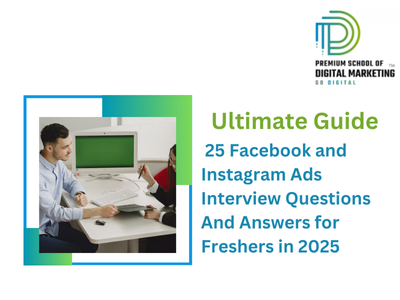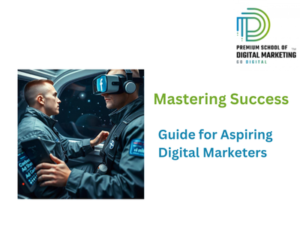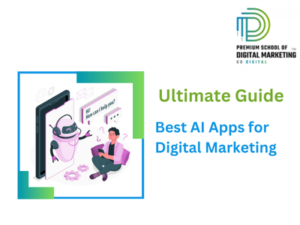Introduction
If you’re a fresher preparing for an interview in digital marketing, it’s essential to understand the basics of Facebook and Instagram advertising. Here are 25 beginner-friendly questions and answers to help you get started.
Looking to upgrade your SEO skills or learn more about digital marketing? Check out our digital marketing courses in Vashi and digital marketing courses in Pune for expert-led training and hands-on experience.
1. What Are Facebook and Instagram Ads?
Answer:
Facebook and Instagram ads are paid promotional content that businesses use to target specific audiences on these platforms. They help in achieving goals like increasing brand awareness, generating leads, and driving sales.
2. Why Are Facebook and Instagram Ads Important?
Answer:
These platforms are popular because:
- They have a large and diverse user base.
- They allow precise targeting based on demographics, interests, and behavior.
- They provide measurable results for performance analysis.
You may also like to read: 40 Seo Interview Questions And Answers for Fresher in 2024
3. What Is Facebook Ads Manager?
Answer:
Facebook Ads Manager is a platform where advertisers create, manage, and analyze ad campaigns on Facebook and Instagram. It allows detailed customization and performance tracking.
4. What Are the Main Objectives of Facebook and Instagram Ads?
Answer:
Ad objectives are divided into three categories:
- Awareness: Brand awareness, reach.
- Consideration: Traffic, engagement, app installs, video views, lead generation, messages.
- Conversions: Conversions, catalog sales, store traffic.
5. What Is a Target Audience?
Answer:
A target audience is the group of people an advertiser aims to reach with their ads. It can be defined based on age, location, gender, interests, and online behavior.

6. What Are the Different Types of Facebook and Instagram Ads?
Answer:
Some common types include:
- Image Ads: Single photo ads.
- Video Ads: Short videos that showcase a product or service.
- Carousel Ads: Multiple images or videos in a single ad.
- Stories Ads: Full-screen vertical ads displayed in Stories.
- Reels Ads: Short, engaging videos on Instagram Reels.
7. What Is a Call-to-Action (CTA)?
Answer:
A CTA is a button or message in an ad that prompts users to take specific actions like “Shop Now,” “Sign Up,” or “Learn More.”
You may also like to read : List of Top Digital Marketing Certifications Programs (Google & Facebook ) in 2024
8. What Is the Difference Between Reach and Impressions?
Answer:
- Reach: The number of unique users who see your ad.
- Impressions: The total number of times your ad is displayed, including multiple views by the same user.

9. What Is a Budget in Advertising?
Answer:
A budget is the amount of money allocated to run ads. It can be:
- Daily Budget: The maximum amount spent per day.
- Lifetime Budget: The total amount spent over the duration of the campaign.
10. What Is A/B Testing?
Answer:
A/B testing involves running two versions of an ad with small differences (e.g., image, headline) to see which performs better. It helps optimize ad performance.
11. What Is a Lookalike Audience?
Answer:
A Lookalike Audience is a group of people who are similar to your existing customers. Facebook uses data from your source audience to find users with similar characteristics, making it easier to target potential customers.
12. What Are Custom Audiences?
Answer:
Custom Audiences allow you to target specific users based on their previous interactions with your business. Examples include uploading customer lists, targeting website visitors, or app users.
13. What Is the Role of Keywords in Facebook and Instagram Ads?
Answer:
Unlike search ads, Facebook and Instagram ads rely on interests and behavior rather than keywords. However, you can use relevant keywords in your ad copy to make the content more engaging for your audience.
14. What Is Ad Frequency?
Answer:
Ad Frequency measures how often the same person sees your ad. If the frequency is too high, it can lead to audience fatigue, so it’s essential to monitor and adjust your ads accordingly.
15. How Can You Track the Performance of Ads?
Answer:
You can track ad performance using metrics such as:
- CTR (Click-Through Rate): Measures the percentage of people who clicked on your ad.
- CPC (Cost Per Click): The amount paid for each click.
- Conversions: The number of desired actions completed.
- ROAS (Return on Ad Spend): Revenue generated for every dollar spent.
16. What Is the Facebook Pixel?
Answer:
The Facebook Pixel is a piece of code added to your website that tracks user interactions. It helps measure ad performance and optimize campaigns by providing insights on customer behavior.
17. What Is the Difference Between Organic and Paid Reach?
Answer:
- Organic Reach: The number of people who see your content without paid promotion.
- Paid Reach: The number of people who see your content as a result of paid ads.
18. What Are Dynamic Ads?
Answer:
Dynamic Ads automatically promote your products to people who have shown interest in them, such as website visitors or app users. They use data from your product catalog.
19. What Is Conversion Tracking?
Answer:
Conversion tracking measures the actions people take after viewing or clicking your ad, such as making a purchase or signing up for a newsletter.
20. What Is a Campaign Objective?
Answer:
A campaign objective defines the goal of your ad campaign, such as increasing website traffic, generating leads, or boosting sales.
21. What Are Interest-Based Audiences?
Answer:
Interest-based audiences are groups of people targeted based on their hobbies, activities, and interests as identified by Facebook and Instagram.
22. What Is Retargeting?
Answer:
Retargeting involves showing ads to people who have already interacted with your brand, such as visiting your website or adding items to their cart without completing a purchase.
23. What Are Video Ads?
Answer:
Video Ads use short videos to capture attention and showcase products or services. They can appear in the feed, Stories, or Reels.
24. What Are Collection Ads?
Answer:
Collection Ads showcase multiple products in a grid layout and open into a full-screen experience when clicked. They are designed to drive product discovery and conversions.
25. What Is the Importance of Analytics in Advertising?
Answer:
Analytics provide data on the performance of your ads, helping you understand what works and what doesn’t. It enables you to optimize your strategy for better results.





